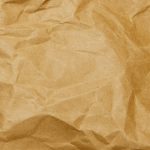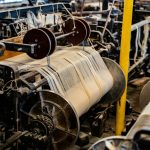Jute fabric is a strong, natural fiber made from jute plant stems, offering a rustic look and excellent durability. You’ll find it breathable, moisture-absorbent, and biodegradable, making it eco-friendly and perfect for sacks, rugs, and bags. This fast-growing crop requires minimal chemicals, supporting sustainable farming and reducing environmental impact. If you want to understand its history, production methods, properties, and future innovations, there’s plenty more to explore about this versatile textile.
Table of Contents
Key Takeaways
- Jute fabric is a strong, durable, and biodegradable natural fiber from jute plant stems with a coarse, rustic texture.
- It has been historically vital in South Asia for sacks, ropes, and eco-friendly textiles since ancient times.
- Jute production involves harvesting, retting, fiber extraction, and drying, emphasizing sustainable and water-efficient methods.
- Known for breathability, moisture absorption, and natural golden color, jute is easily dyed but sensitive to sunlight.
- Innovations include eco-friendly blends, smart textiles, and expanded uses in sustainable fashion and industrial applications.
What Is Jute Fabric?
Jute fabric is a natural fiber material made from the stems of the jute plant. When you work with jute, you’re handling a strong, coarse fiber that’s both durable and biodegradable.
It’s often used for sacks, rugs, and upholstery because it holds up well under wear and tear. You’ll notice jute’s texture is rougher than cotton or silk, giving it a rustic, earthy look that many find appealing.
Plus, jute is breathable and moisture-absorbent, making it practical for various uses. If you care about sustainability, jute’s eco-friendly nature means it decomposes quickly and requires less water and pesticides to grow.
History and Origin of Jute
The story of this versatile fiber dates back thousands of years, rooted in the fertile regions of the Indian subcontinent.
You’ll find that jute has been an essential part of daily life in Bangladesh and India, where it grew wild and was first woven into fabric. Over time, people recognized its strength and eco-friendliness, making it perfect for sacks, ropes, and mats.
By the 19th century, jute became a major export, especially during British colonial rule, transforming local economies.
Today, you can appreciate how this humble fiber’s history shapes its role in sustainable fashion and industry worldwide. Understanding jute’s origins helps you see why it remains a popular natural textile option with deep cultural and economic roots.
How Jute Is Produced
Now that you know jute’s history, let’s look at how it’s produced.
You’ll start by harvesting the plants, then move on to retting, which loosens the fibers.
Finally, you’ll use specific techniques to extract the fibers for fabric making.
Harvesting Jute Plants
Although it may seem straightforward, harvesting jute requires careful timing and technique to guarantee the fibers retain their strength and quality. You need to cut the plants at the right maturity—usually 4 to 6 months after sowing—when the stems are still green but fully grown. After cutting, bundle the stalks and transport them quickly for further processing. Here’s a quick guide to harvesting jute plants:
| Step | What You Do |
|---|---|
| Timing | Harvest at 4-6 months maturity |
| Cutting | Use a sharp sickle, cut near base |
| Bundling | Tie stalks into manageable bunches |
| Transport | Move quickly to processing site |
Following these steps helps you get the best fibers for quality jute fabric.
Retting Process Explained
Once you’ve harvested your jute stalks, you’ll need to separate the fibers from the woody stems through a process called retting.
Retting breaks down the pectin that binds the fibers to the stalk, making it easier to extract them later. You can submerge the stalks in slow-moving water for about 10 to 20 days, allowing natural microbial action to soften the material.
Alternatively, you can spread the stalks on a moist surface and let dew retting occur under controlled conditions. Monitoring the retting process is vital; over-retting weakens fibers, while under-retting makes extraction difficult.
Once the stalks feel soft and the fibers loosen, you’re ready to move on. This natural, water-based method is eco-friendly and essential for producing high-quality jute fibers.
Fiber Extraction Techniques
Three main steps help you extract fibers from retted jute stalks: stripping, washing, and drying.
First, you strip the softened outer fibers from the stalk by hand or with simple tools, separating them from the woody core.
Next, you wash the fibers thoroughly to remove any remaining dirt, pectin, and impurities. This cleaning guarantees the fibers are soft and ready for processing.
Finally, you dry the fibers under sunlight or in controlled environments to prevent mold and maintain fiber quality.
Once dried, the fibers become strong, flexible, and suitable for spinning into yarn.
Key Properties of Jute Fabric
When you choose jute fabric, you’re getting a material known for its strength, durability, and natural luster. Jute fibers are coarse yet flexible, giving the fabric a sturdy texture that holds up well under stress.
You’ll find it highly absorbent, which makes it prone to moisture retention, so it’s best kept dry to maintain its integrity. The fabric is also breathable and has good insulation properties, keeping things cool or warm as needed.
Its natural golden-brown color offers an earthy appeal, and you can dye it easily to suit your style. Jute is biodegradable and resistant to wear, but it’s sensitive to prolonged sunlight exposure, which can weaken fibers over time.
Environmental Benefits of Using Jute
Because jute is a fast-growing, renewable crop, choosing jute fabric helps reduce environmental impact compared to synthetic materials.
When you opt for jute, you support a fiber that requires minimal pesticides and fertilizers, which means less chemical runoff and soil degradation.
Jute plants absorb significant amounts of carbon dioxide, helping combat climate change. Plus, jute is biodegradable, so it breaks down naturally without leaving harmful residues.
Using jute reduces your reliance on petroleum-based fabrics that contribute to pollution and microplastic waste.
Also, jute cultivation improves soil health and prevents erosion, so your choice promotes sustainable agriculture.
Common Uses and Applications of Jute
Choosing jute fabric not only benefits the environment but also opens up a wide range of practical uses.
Choosing jute fabric supports the environment and offers versatile, practical applications for everyday use.
You’ll find jute’s strength and durability make it ideal for many everyday items. Whether you’re looking to add a rustic touch or need something eco-friendly, jute fits the bill.
Here are some common applications you can explore:
- Bags and sacks: Great for groceries or storage, jute bags are sturdy and reusable.
- Home decor: Use jute rugs, curtains, and cushions to bring natural texture indoors.
- Agricultural uses: Farmers use jute for soil erosion control and as plant twine.
- Packaging material: Jute wraps and mats protect goods while being biodegradable.
Comparing Jute to Other Natural Fibers
Although jute shares qualities with other natural fibers like cotton, hemp, and flax, it stands out for its unique blend of strength, affordability, and eco-friendliness.
You’ll find jute is coarser than cotton but stronger, making it ideal for heavy-duty uses like sacks and rugs. Compared to hemp, jute is less durable but grows faster and requires fewer pesticides, so it’s more sustainable.
Flax, used for linen, offers a softer texture and higher durability, but jute beats it on cost and biodegradability.
If you want a natural fiber that balances toughness with environmental benefits without breaking the bank, jute’s a smart choice. Its versatility and low-impact cultivation make it a practical alternative to other natural fibers for many everyday products.
Tips for Caring and Maintaining Jute Fabric
Jute’s natural strength and eco-friendly nature make it a popular choice, but maintaining its quality requires some care.
To keep your jute fabric looking fresh and durable, follow these tips:
- Avoid excessive moisture; jute can weaken and mold if soaked.
- Clean spills quickly with a dry cloth or mild soap solution.
- Store jute items in a cool, dry place away from direct sunlight to prevent fading.
- Use a soft brush to remove dust and dirt regularly, keeping fibers intact.
Innovations and Future Trends in Jute Textiles
You’ll see jute evolving with sustainable production methods that cut waste and energy use.
Advanced jute blends are making fabrics stronger and more versatile than ever before.
Plus, smart textile applications are turning jute into high-tech materials for the future.
Sustainable Production Methods
As the demand for eco-friendly materials rises, producers are adopting innovative methods to make jute textiles more sustainable.
You’ll find that these techniques not only reduce environmental impact but also improve the quality and durability of jute products.
By focusing on sustainable production, you support a greener future and encourage responsible manufacturing.
Here are key sustainable production methods you should know:
- Water-efficient retting: Using less water during fiber extraction to conserve resources.
- Organic farming: Avoiding synthetic pesticides and fertilizers to protect soil health.
- Renewable energy: Powering processing plants with solar or wind energy.
- Waste recycling: Repurposing jute byproducts into bioenergy or compost.
These methods help you choose jute textiles that align with your eco-conscious values.
Advanced Jute Blends
Many textile innovators are blending jute with other fibers to create advanced fabrics that combine strength, flexibility, and eco-friendliness. You’ll find blends with cotton, wool, and even synthetic fibers like polyester that enhance durability and texture. These combinations open new possibilities for fashion, upholstery, and industrial uses, all while keeping sustainability at the core. Here’s a quick look at popular jute blends:
| Blend Type | Key Benefit | Common Uses |
|---|---|---|
| Jute-Cotton | Softness + strength | Apparel, bags |
| Jute-Wool | Warmth + texture | Home textiles |
| Jute-Polyester | Flexibility + durability | Upholstery, sacks |
| Jute-Silk | Shine + comfort | Fashion accessories |
| Jute-Rayon | Smooth feel + breathability | Curtains, drapes |
Exploring these blends helps you choose fabrics that balance eco-consciousness and performance.
Smart Textile Applications
While traditional uses of jute focus on strength and sustainability, emerging smart textile applications are transforming this natural fiber into high-tech solutions.
You can now find jute integrated with sensors and conductive materials, making it part of wearable tech and environmental monitoring systems. These innovations not only enhance jute’s versatility but also align with eco-friendly trends.
Here are some exciting developments you should know about:
- Wearable health monitors using jute-based fabrics for comfort and biodegradability
- Environmental sensors embedded in jute for real-time pollution tracking
- Energy harvesting textiles that convert motion into electrical energy
- Interactive fabrics with touch-sensitive jute blends for smart clothing
Frequently Asked Questions
Can Jute Fabric Be Dyed Easily at Home?
Dyeing jute fabric at home is like painting on a rough canvas—it soaks up color unevenly. You can do it, but expect a rustic look. Using fabric dye with hot water and patience works best.
Is Jute Fabric Suitable for Allergy Sufferers?
You might find jute fabric irritating if you have sensitive skin or allergies since it’s coarse and can cause itchiness. However, some people with mild allergies tolerate it fine. Always test a small patch first.
How Does Jute Fabric React to Washing Machines?
Machines might mishandle jute’s natural fibers, causing shrinkage or stiffness. You shouldn’t toss it in regular cycles; instead, hand wash gently or use a delicate setting to preserve jute’s texture and prevent damage.
What Is the Cost Comparison Between Jute and Synthetic Fabrics?
You’ll find jute fabric generally costs less than many synthetic fabrics due to its natural fibers. However, synthetics often offer durability and lower maintenance, which might save you money long-term despite their higher upfront price.
Can Jute Fabric Be Used in Upholstery?
Wondering if jute fabric suits upholstery? Absolutely! You’ll find it’s durable and eco-friendly, perfect for rustic or casual styles. Just remember to treat it properly to prevent wear and extend your furniture’s life.
- Where to Buy Sherpa Suede Fabric - July 12, 2025
- How to Draw or Illustrate the Texture of Suede Fabric - July 12, 2025
- What Is Baseball Suede Leather Fabric? - July 12, 2025







